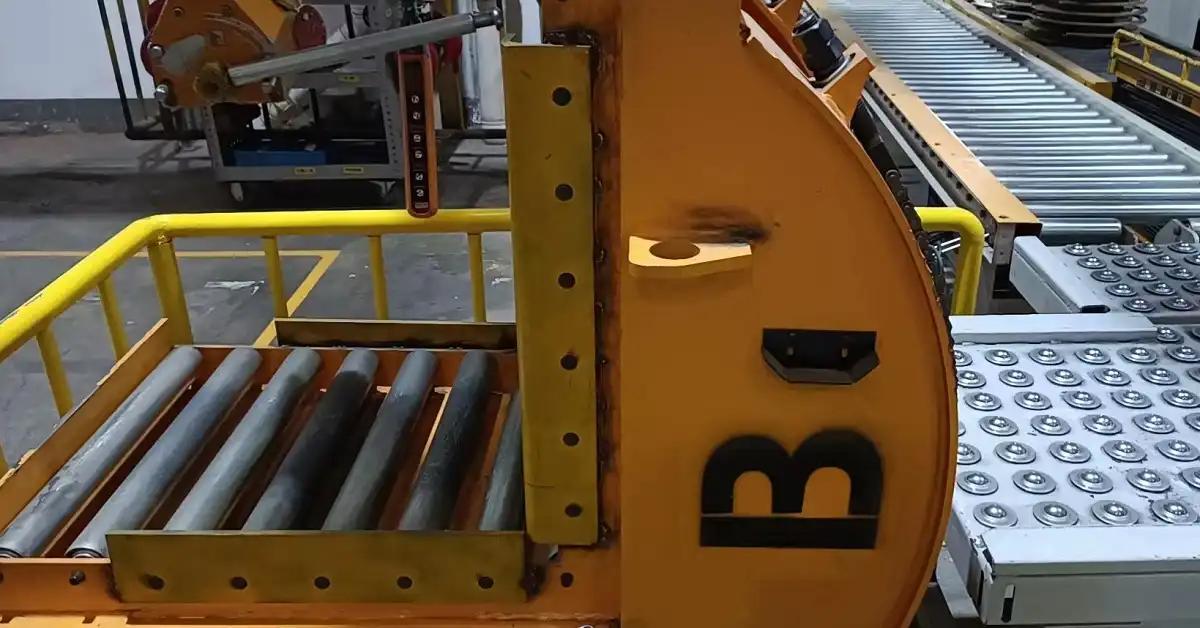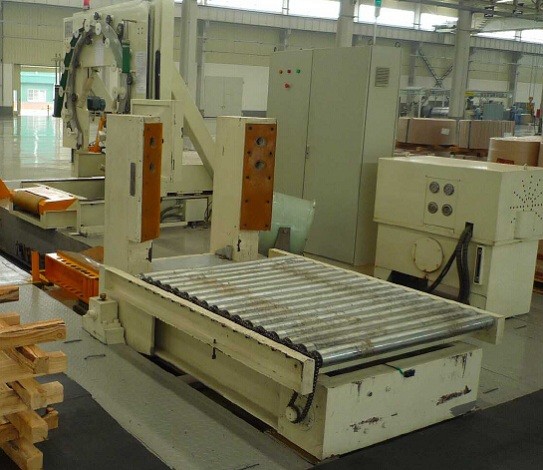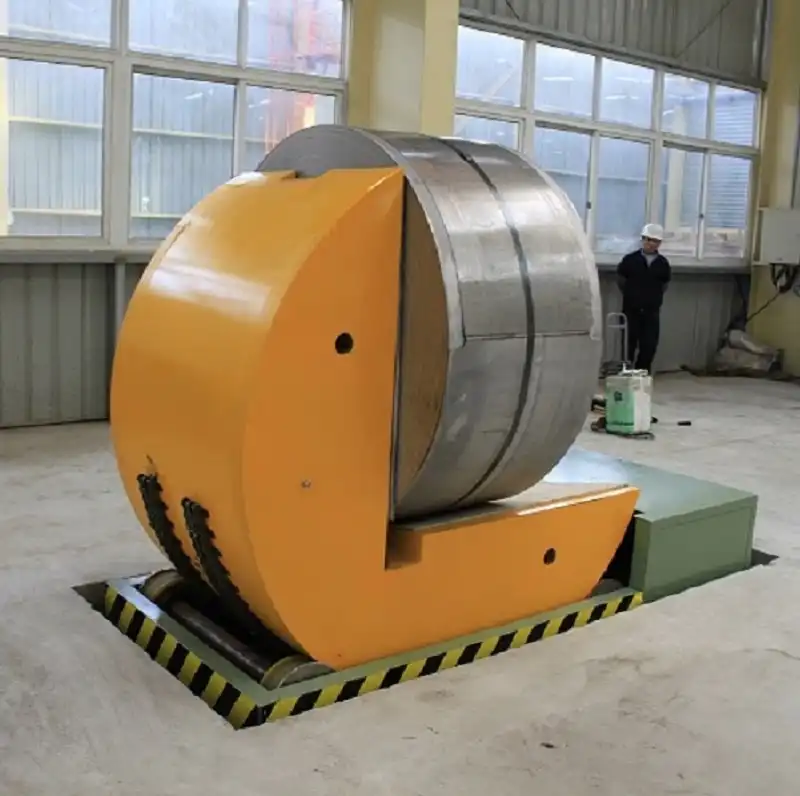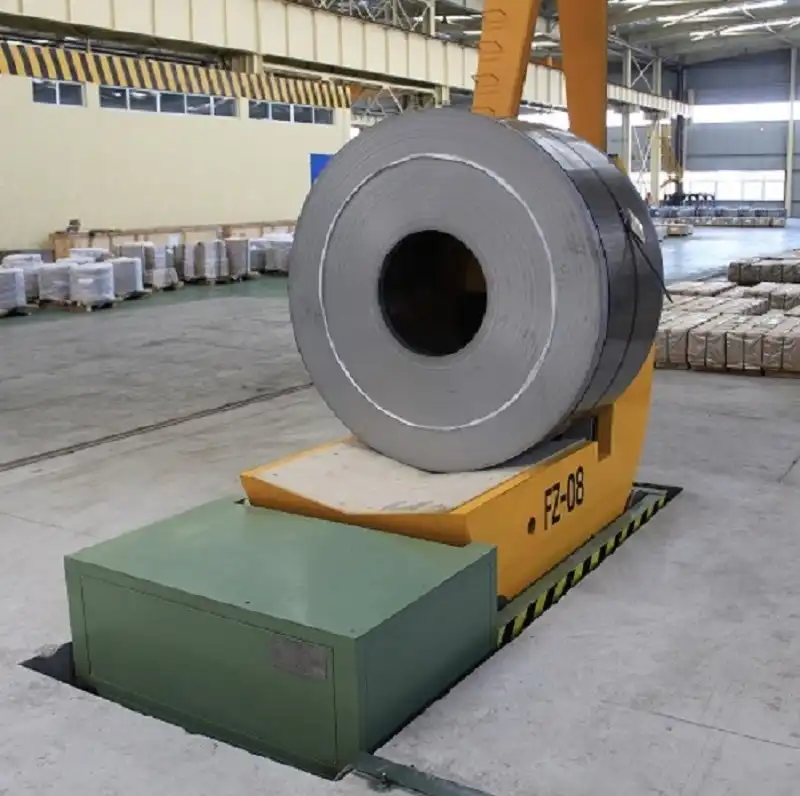Workers often struggle with large coils. The challenge of quickly and safely adjusting their angle can slow production. This causes stress and increases costs. A coil upender provides an easy solution.
A coil upender rotates a coil to the desired angle efficiently and safely. The machine’s controlled motion ensures stability, reduces manual handling risks, and speeds up processes.

"adjusting coil angle with upender")
A well-designed coil upender simplifies angle adjustments for coils, saving time and ensuring safety. Let’s explore the process and key steps for using this tool effectively.
What is the Role of a Coil Upender in Angle Adjustment?
Operators often find it difficult to tilt heavy coils manually. They worry about safety and precision. This is where a coil upender changes the game.
A coil upender uses a motorized cradle to rotate coils with ease. It allows precise angle adjustments without manual intervention, ensuring consistency and safety in operations.

"coil upender role in angle adjustment")
Understanding the Functionality of a Coil Upender
A coil upender typically consists of a base, a rotating cradle, and a control panel. The operator places the coil securely onto the cradle, which grips it firmly. With the press of a button, the cradle rotates to the desired angle. This eliminates the need for manual labor, reducing physical strain and increasing accuracy.
Key Features of a Coil Upender
| Feature | Function | Benefit |
|---|---|---|
| Motorized Cradle | Rotates coil smoothly | Precise and controlled movement |
| Safety Mechanisms | Includes locks and sensors | Prevents accidents |
| Adjustable Design | Accommodates various coil sizes | Versatile usage |
| Simple Controls | User-friendly interface | Reduces training time |
The upender can handle coils of different weights and dimensions, making it an adaptable tool. For angle adjustments, the machine’s speed and rotation angle are customizable. This means operators can set specific parameters for each coil type.
I remember seeing how a poorly aligned coil disrupted an entire production line. After introducing a coil upender, the adjustments became consistent and quick. This tool saved time and helped the team meet deadlines without compromising safety.
How to Use a Coil Upender for Quick Angle Adjustments?
I see many operators unsure about using upenders. They worry about damaging the coil or misusing the machine. A clear step-by-step guide can address these concerns.
Using a coil upender involves placing the coil on the cradle, securing it, selecting the angle, and starting the rotation. The process is straightforward and efficient with proper training.

Step-by-Step Guide for Using a Coil Upender
- Inspect the Coil and Machine: Check the coil’s dimensions and weight to ensure it fits the upender’s capacity. Inspect the machine for any wear or damage.
- Position the Coil: Use a forklift or crane to place the coil onto the cradle. Align it properly to avoid imbalance.
- Secure the Coil: Adjust the clamps or support guides to hold the coil firmly. This step is crucial to prevent slipping during rotation.
- Set the Desired Angle: Use the control panel to input the required angle. Advanced upenders may have pre-set options for common angles.
- Start the Rotation: Press the start button. Monitor the rotation to ensure smooth and consistent movement.
- Recheck and Proceed: Once the angle is set, double-check the alignment before moving the coil to the next stage.
Common Mistakes to Avoid
| Mistake | Consequence | Solution |
|---|---|---|
| Improper Coil Placement | Coil may slip during rotation | Align coil carefully on the cradle |
| Overloading the Upender | Machine strain or damage | Check weight limits before use |
| Ignoring Safety Checks | Risk of accidents | Inspect machine and coil first |
Following these steps ensures a safe and efficient operation. When I introduced these guidelines at a facility, the error rate dropped significantly. Operators felt more confident, and productivity improved.
What Safety Features Make a Coil Upender Reliable?
Safety is a common concern when handling heavy coils. Accidents can happen if machines lack proper safeguards. Modern coil upenders come with built-in safety features to protect both operators and coils.
Key safety features of a coil upender include clamps, sensors, and emergency stop systems. These features prevent accidents and ensure smooth operation.

"coil upender safety features")
Exploring Advanced Safety Mechanisms
Modern upenders are designed with safety as a priority. One essential feature is the clamping system. It secures the coil firmly, preventing it from moving during rotation. Adjustable clamps accommodate different coil sizes, ensuring a snug fit.
Another key feature is the sensor system. Sensors monitor the coil’s position and detect any imbalance or misalignment. If an issue arises, the machine halts immediately to prevent damage or accidents.
Detailed Overview of Safety Features
| Safety Feature | Function | Benefit |
|---|---|---|
| Adjustable Clamps | Securely hold coils of various sizes | Prevents slipping during rotation |
| Position Sensors | Monitor coil alignment | Detects misalignment early |
| Emergency Stop System | Allows instant shutdown | Ensures operator safety |
| Overload Protection | Prevents operation beyond capacity | Protects machine and coil |
Emergency stop buttons are another critical feature. Placed within easy reach, they allow operators to halt the machine instantly in case of an emergency. Overload protection systems are also standard in quality upenders. They prevent the machine from operating if the coil exceeds its weight limit.
When a facility I visited installed an upender with these features, their incident rate dropped to zero. Operators felt safer, and the company avoided costly downtime from accidents. The combination of advanced safety mechanisms and proper training made a noticeable difference.
Conclusion
I believe a coil upender is the ideal tool for quick and safe angle adjustments. It boosts efficiency, ensures operator safety, and protects coils from damage, making it a smart investment.